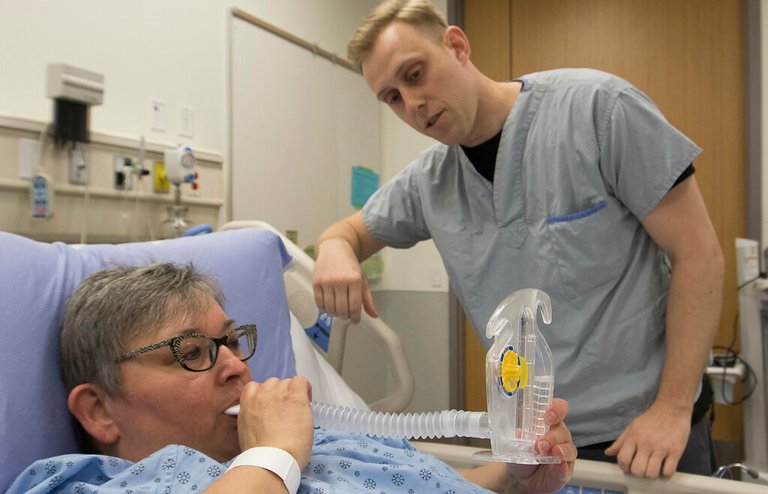Acinetobacter: Microbial World Beyond Our Mobile Screens
Someone was asking me a question yesterday if it was possible for bacteria to be present in our phones, if it was possible for them to cause us to be sick, and if they could be resistant to antibiotics, and my answer was YES.
You see, bacteria are found everywhere and even inside our body so what is the case of our phones or the panels of our phones that they cannot lay there or for their own habitat there. The majority of bacteria that lives on phones are harmless, and so when we hold that favorite gadget of our to stream that video or surf the internet, we do not have any reason to be scared.
While we do not need to be scared of touching our phones since majority of the bacteria in our phones are harmless, it was not the same in the case of a 48 year old man who got infected by Acinetobacter from his phone that caused lots of harm to his organs and led to his death. Acinetobacter is becoming resistant to almost all antibiotics that we have currently.
This man in his 20s was a smoker who smoked cigarette for 4 years, and overtime began to experience shorter breath. This lead him to quit smoking. At the same time, he was diagnosed with Asthma and treated himself with different inhalers and steroids. While there were certain improvement sometimes, there were cases where there were no improvement and this led him to see a lung doctor. After tests, he was diagnosed with Alpha-1-Antitrypsin Deficiency which was a genetic disease that caused his lungs to function poorly. To treat himself, he was given weekly infusion of Alpha-1- proteinase inhibitor which helped over time but would also treat himself with daily cortical steroid therapy for his Asthma and COPD.
As time went on, his lungs deteriorated that he needed to do double lung transplant to keep him alive but then Pathological examination of his native lungs showed Bolis Emphysema and bronchiectasis. The transplant process would have to go with the patient receiving immunosuppresants so his body's antibiodies do not reject the transplanted lungs. He also used antibiotics, antifungal, ad antiviral medications to prevent infection.
The surgery was successful and he went home but after 2 weeks he began to experience low blood pressure, his kidneys were not making much urine, his whit blood cell count was increasing and when his chest was screened, it showed he had pneumonia. Soon he was placed on a ventilator to help breath and a broncoscopy was done to identify what was wrong in the lungs, and the sample when tested showed increased white blood cells, presence of gram positive cocci bacteria and gram negative rods but the exact bacteria wasn't known at the time since it took a lot of time to grow the specie but he was treated with Vancomycin and Meropenem.
After his death, his autopsy showed he had acute bronchitis and pneumonia. The bacteria was also found in his blood, spleen and all other parts of the body. It was then seen that the bacteria was resistant to the antibiotics tested again. This bacteria has become a life-threatening bacteria among people who are immunocompromise, neonate, people with cancer and hospitalized patients. It can also be found on the surface of non-living substances like curtains, beds, walls, sinks, medical devices, and phones.
In recent times, using Bacteriophages has become a therapy for this bacteria. Bacteriophages are viruses that feed on bacteria. Using bacteriophages is a recent treatment for Acinetobacter but this wasn't used for this man. The best way of treatment for Acinetobacter is preventing this bacteria completely.
The cautionary tale prompts reflection on the importance of preventive measures against such resilient bacteria, especially for immunocompromised individuals, neonates, and those within healthcare settings. As our understanding of microbial threats deepens, so does the imperative for comprehensive strategies to curb the proliferation of antibiotic-resistant strains and safeguard public health
Reference
https://www.ncbi.nlm.nih.gov/pmc/articles/PMC6656356/
https://www.ncbi.nlm.nih.gov/pmc/articles/PMC2844046/
https://www.nhlbi.nih.gov/health/bronchiectasis
https://www.ncbi.nlm.nih.gov/pmc/articles/PMC10040976/
https://www.ncbi.nlm.nih.gov/books/NBK537243/
https://www.cdc.gov/mmwr/preview/mmwrhtml/mm5345a1.htm
https://www.ncbi.nlm.nih.gov/books/NBK493185/


Wow, Thomisin, your blog really shed light on a crucial yet often overlooked aspect of our daily lives – the presence of bacteria, like Acinetobacter, on our mobile devices.
Your storytelling skill made the topic both informative and relatable. It's a sobering reminder of the importance of hygiene, especially for those vulnerable to infections.
Thank you for sharing this eye-opening narrative and emphasizing the need for preventive measures against antibiotic-resistant strains.
Keep up the great work!❤️
Working in the lab, my colleagues and I make a point to disinfect our phones, AirPods, etc. a few times each month.
They haven't evolved to be resistant to 70% ethanol yet. lol
Thanks for your contribution to the STEMsocial community. Feel free to join us on discord to get to know the rest of us!
Please consider delegating to the @stemsocial account (85% of the curation rewards are returned).
Thanks for including @stemsocial as a beneficiary, which gives you stronger support.
Thanks for this info. It's true that he's already immunocompromised, which in some way contributes to worsening an infection that we normally can handle.
I admit I don't have some sort of hygiene with my mobile phone. So maybe it's time to make it a habit!